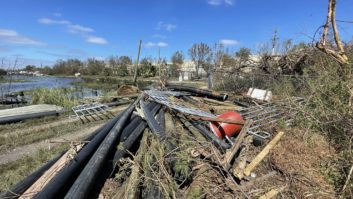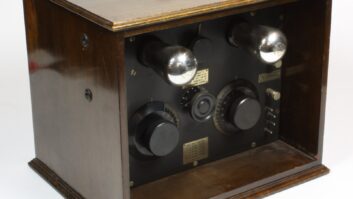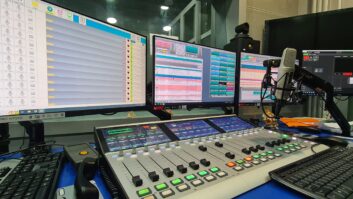The author is assistant vice president and director of broadcast communications for The Durst Organization.
Thinking of building, thinking of renovating, think green.
Broadcasters can do more than air public service announcements about the environment; they can actually do something about it. From energy-efficient buildings, to environmental waste management, to alternate fuel for your fleet of mobile vans, you as a broadcaster have a responsibility to yourself and to your community to put your best foot forward and go beyond mere words.
Green initiatives at broadcast facilities are in the news; and this is likely to be a theme of discussion at the upcoming NAB convention.
Green and Broadcasting. The “why” is simple; it’s the right thing to do. The “hows” are a little more complicated; here’s an overview plus links to green solutions.
There’s a wealth of information on the Internet that did not exist 10 years ago, or even five years ago. There are contractors who are LEED (Leadership in Energy and Environmental Design) accredited and schooled in green construction who were not there 10 years ago. There are manufacturers who specialize in green technology making what was once extremely expensive more in line with nongreen construction costs.
Using what nature gives us everyday is a start to thinking green. The sunshine that can light the office space; the rainwater that can be collected and used in the bathrooms for washing hands and flushing toilets. Making ice from that collected rainwater overnight while the demand for electricity is low and costs for that electricity are much lower. Reusing the ice to help lower the temperature of the air you must condition in the heat of the day. These are but a few ways to make your broadcasting facility green.
Waterless urinals, for instance, each can save some 40,000 gallons or 151,000 liters of fresh water each year. As much as 5 percent of fresh water available is used to flush away urine! The saved water does not need to be transported to the urinal or away from it to the water treatment facility, saving energy. No energy is needed to treat this saved water, nor does it produce carbon dioxide emissions as a by-product of its treatment.
Economically, your operating costs are reduced both in buying water and paying sewer charges. Both will certainly rise in the future. Think about the savings of valve maintenance from normal use and vandalism. Pipe cleaning will be reduced because there will be no hard water running through the pipes causing calcification.
In our new building, now under construction, we anticipate saving over one-and-a-half billion gallons of fresh water using waterless urinals, and that much again by recovering and reusing rainwater for hand washing and toilet flushing.
Your facility may not be this size, but the savings add up all the same.
Building green is not as difficult as it sounds or as costly as it once was, and the savings over time more than offset the slightly elevated initial costs.
The use of wood from certified forests in your construction guarantees that the forests are replanted. Using blast furnace slag in your concrete mix assures a lower CO2 component than making all-new concrete. Buying locally and reducing the trucking distances for material also cuts down on the CO2 footprint and greenhouse effect.
Useful links including electronics recycling resources:NCER – electronicsrecycling.org
EPA resource – epa.gov
Electronics recycling – earth911.org
Creative recycling – crserecycling.com
California and Massachusetts recycling – electronicrecyclers.com
Middle Atlantic States recycling – thegreenpc.com
NYC – nyc.gov
The Plains States – grxrecycles.com
ERecycle – erecycle.org
Int’l Assn. of Electronics Recyclers – iaer.orgHow about a green roof on your office complex in the suburbs? Planting on the roof cuts down on the heat signature of the site and allows for absorption of rainwater for reuse. Keeping the light that escapes from your windows to a minimum in a lowly lit area helps the natural habitat and wildlife in the area.
How about a solar array to provide some of your electric load or be available to power your critical systems in the event of a blackout, allowing operations to continue or at least have time to perform a systematic shutdown, not one dictated by an electric grid failure?
Local laws now dictate recycling almost everywhere. Going green in your broadcasting facility is not as difficult as you might think. In new construction. From digging the foundation to completing the project there are hundreds of ways to improve what you are doing.
If you are renovating existing facilities, the use of environmentally friendly furniture, carpet, wall coverings, etc., help with the greening of your 21st century plant. As I stated, material is out there on the Internet. Consultants, contractors, manufacturers are all now abundant.
Getting your people LEED-accredited and your projects LEED-certified have other benefits as well. Tax savings, long-term cost benefits and a feeling of doing something good are just a few of them.
IAC of Winchester, England, exhibited the first “green” voice-over booth at the IBC convention in 2005 using environmentally friendly acoustic in-fill within the booth’s structural panels. KKGN in San Francisco started programming “green” content in programs throughout the day, as reported in the Feb. 1, 2008 issue of Radio World. WPXI(TV) had already started new construction before parent Cox Broadcasting instituted a green initiative, but they worked to modify the design to have some green features, as reported in the March issue of Television Broadcast.
Energy-efficient flat screen monitors can replace CRT monitors, as long as you remember to dispose of the old monitors in an environmentally friendly way.
Bruno Rost, CEO of The Audemat Group, wrote in a Feb. 13 Radio World commentary that a green strategy can be a positive management tool that drives energy and establishes values throughout the company.
Last year the United Nations Organization started offering “Green Stories” to major broadcasters internationally as they joined MIPTV, the leading international television programming market in Cannes, France. This year MIPTV honors NHK with the Green World Award for integrating environmental questions into their programming since the 1950s. New York’s WNET announced “Green Squad,” an online/on-air initiative that involves middle-school students. The Green Code Project wants to promote environmentally friendly practices that will create an international certification process for the film and media industry.
You can help in the ways mentioned above. See the sidebar box for links to just some of the many green resources out there.
This article is based in part on the author’s recent remarks to the North American Broadcasters Association.












